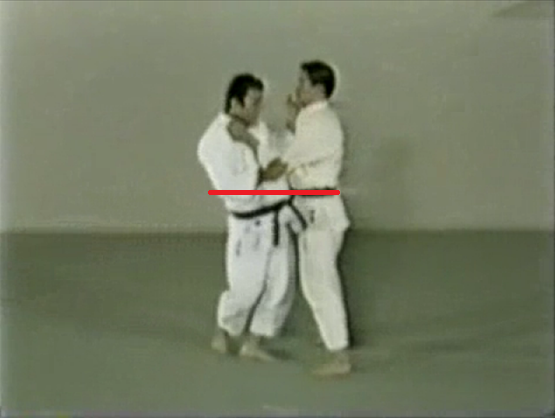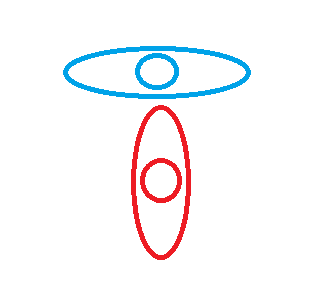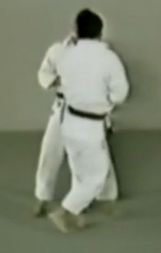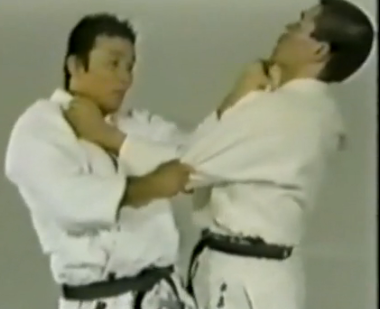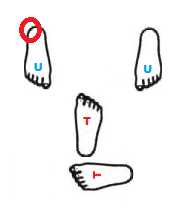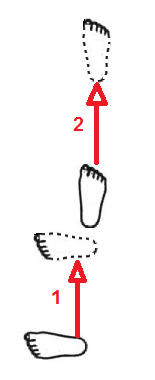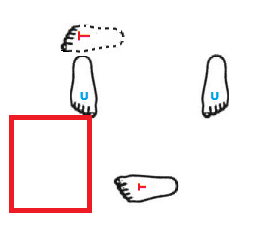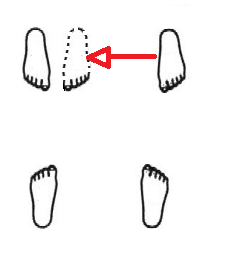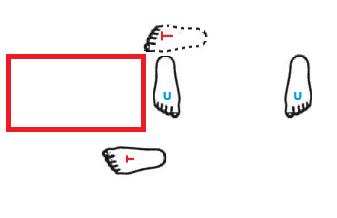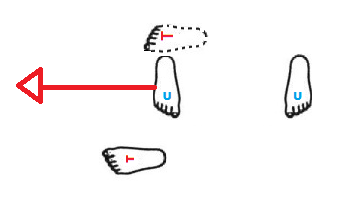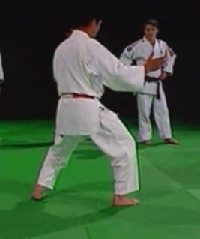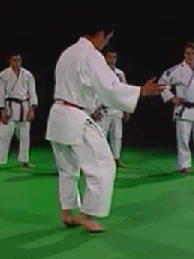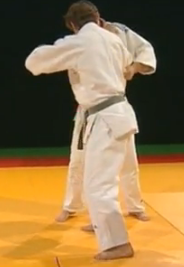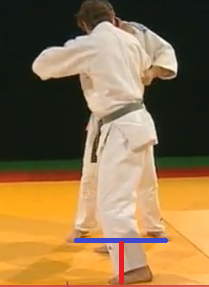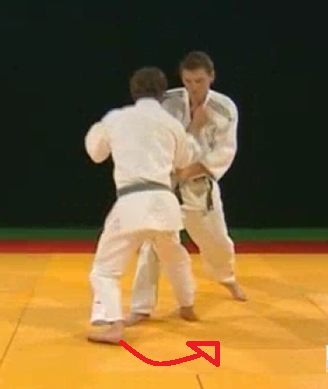Ko uchi gari is a small technique, but a phenomenally powerful one when pulled off perfectly, capable of knocking someone unconscious.
When its not being used to flatten people Ko uchi gari is a perfect attacking technique to induce movement and create opportunities and as such is very often used as the first technique in combinations with major throws.
A deceptively simple looking technique, there are several key points that should be born in mind when practicing it.
Body positioning
Body positioning is the biggest cause of throw failure and wasted practice time when it comes to Ko uchi gari. Or more accurately, incorrect body positioning is the biggest issue.
Its very common when beginners are introduced to Ko uchi gari or are practicing it either as a solo technique or as part of a combination, that they bend over at the waist as the apply kuzushi or try to sweep.
It is vital to ensure a good Ko uchi gari that tori’s body is upright when attacking.
However, this doesn’t mean that tori should be bolt upright on tip toes.
Tori’s upper body should be upright, but his centre of gravity lowered so that it is below uke’s.
Tori should also concentrate on attacking the chest, ensuring that he doesn’t enter for the thow side on.
Instead tori should attempt to ensure he is making as much chest contact as possible and that as much as possible his shoulders are in the same plane as uke’s.
Correct body positioning is vital and by ensuring your position your body for Ko uchi gari, correctly. You will find that the other aspects start to fall into place fairly naturally.
Hands
As in other ‘Gari techniques’ tori should concentrate on attacking the chest with the hand action.
The tsurite is very important in all ‘Gari techniques’ and is equally important in Ko uchi gari.
The forearm makes firm and sustained contact with uke’s chest.
The sleeve hand draws downwards and towards tori’s hip.
As in all techniques both hands should work together and simultaneously. So that uke’s weight is shifted on to the rear of the heel about to be reaped.
So that when the foot action is performed uke is perfectly position to be thrown.
Feet
As I see it there are two main ‘schools of thought’ on the foot action for Ko uchi gari.
There is the school I ascribe to which is the oikomi school of thought, in which a tsugi ashi foot movement is used to create a very powerful explosive attack and there is the ‘touch step/kick out’ school where the attack is less explosively and relies more on the reaping action.
Regardless of the exact footwork one point remains constant.
The foot should be turned over and cupped so that the sole of the foot is what makes contact with uke’s ankle, not the ridge of the side of the foot or the instep.
Tsugi ashi
In this form of Ko uchi gari the tusgi ashi foot movement is used to generate force and then applied to power the reaping action.
The rear foot is brought to the front foot to provide impetus for the action of the advanced reaping foot.
The foot is then reaped roughly into the area indicated by the red box.
Some reap almost directly forwards akin to Ko soto gari others add some degree of diagonal angle to the reap.
I personally prefer this version, because it suits my style of Judo, which as a heavyweight tends to be fairly sedate with little movement. So opportunities for the drawing out/hikidashi style of Ko uchi gari so often practiced in this drill.
Are very few and far between.
As an aside, I loathe this drill with an absolute passion.
I think its literally the worst drill in Judo and whenever I’m at a club and end up doing it, every second of it I feel my blood pressure rising.
I hate it for two main reasons.
Basically no one uke’s for it properly. Instead of stepping forward and allowing themselves to have the weight brought onto their heels. They stomp the foot forward as if doing a Sumo shiko and as a result no one learns anything except how to waste everybody’s time.
Its utterly useless for teaching beginners, because to try and avoid the Sumo stomp people try and rush to get the sweep in before uke’s clubbed foot becomes glued to the mat. They forget all about the hands, body positioning etc and concentrate solely on stepping back and sweeping as quickly as possible.
So its a shit drill, please stop using it coaches. Unless you really, really, really hammer home to uke that it isn’t a contest into who can stomp the mat the hardest and that they’re actually supposed to help their partner out...
And even then, there are better options.
Touch step
Another common footwork for Ko uchi gari, in my experience is what I call the touch step movement.
In the touch step foot pattern the planted foot is brought to the reaping foot.
The advanced to the side of the foot about to be reaped.
Then the reaping foot attacks the intended foot.
The foot is then reaped roughly into the area indicated by the red box
Some perform a very linear reaping action, most tend to do it in a shallow parabola.
Kick out
The ‘kick out’ Ko uchi gari is one of the other most commonly seen variations, it can be done with either the tsugi ashi foot action or the touch step foot action.
However, the initial footwork is done the reaping action is always the same.
The foot is literally kicked outwards laterally.
I don’t think its particularly important which action you do. Although I personally don’t teach the kick out, because I believe its too easily open to abuse.
Rather if you concentrate on getting the body positioning and hand action right then the exact foot action becomes of less consequence.
Combinations
Ko uchi gari is a fantastic technique for use in creating opportunities and linking to big throws. As such its used a lot in combinations.
Some examples of combinations involving Ko uchi gari.
Ko uchi gari into Uchi mata
Seoi nage into Ko uchi gari
Ko uchi gari into Tai otoshi
As always, I hope this has been useful to people and comments, critiques and criticisms are welcome.





